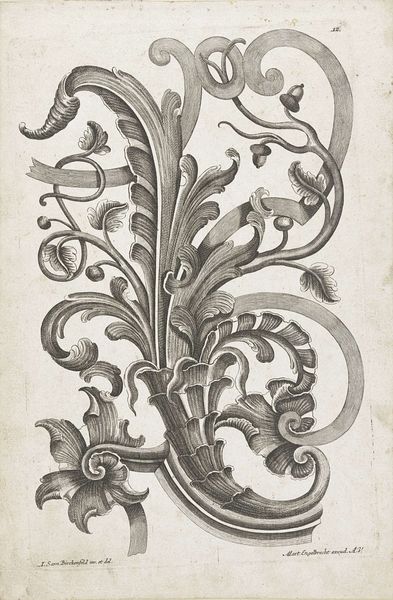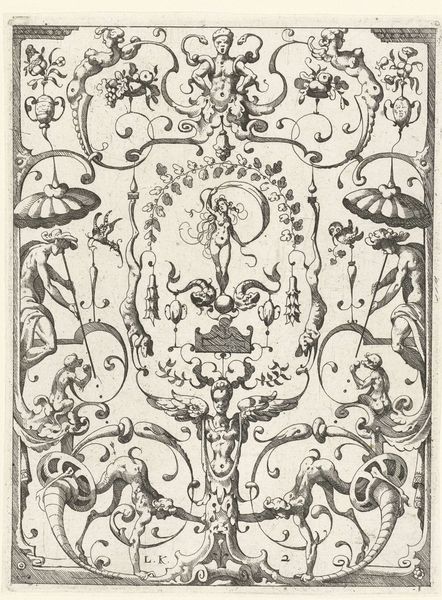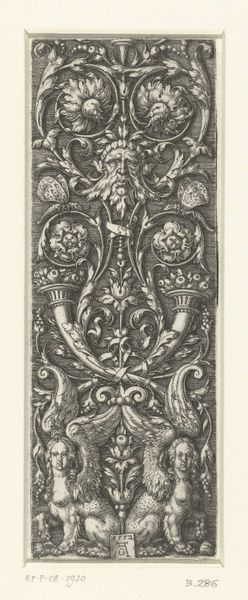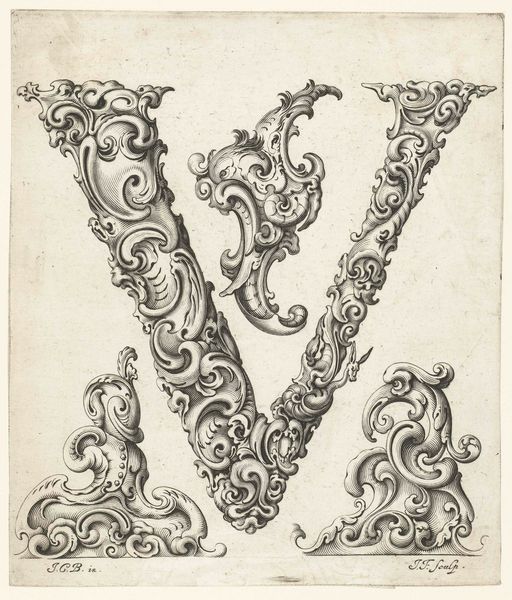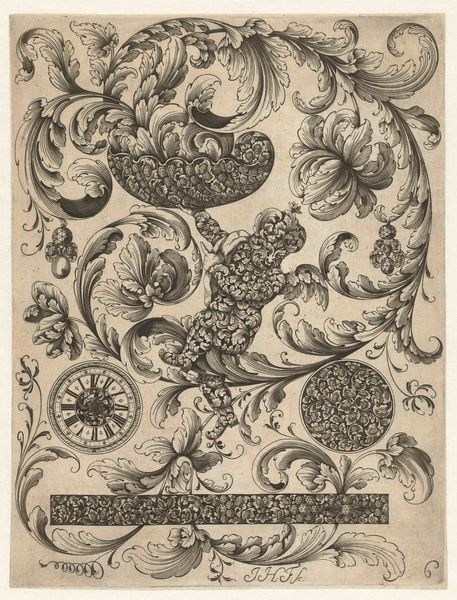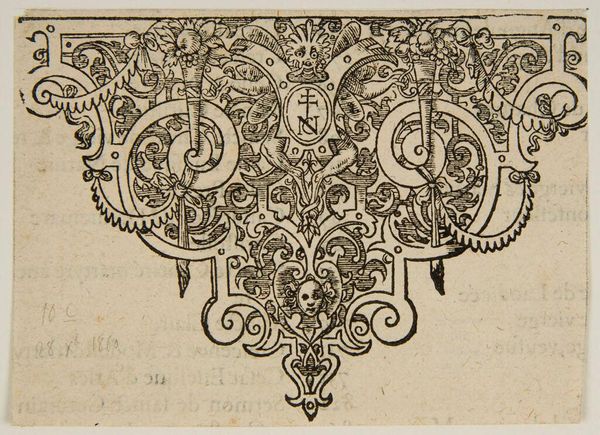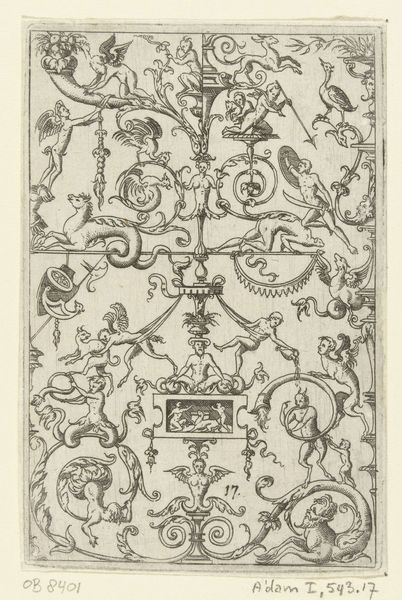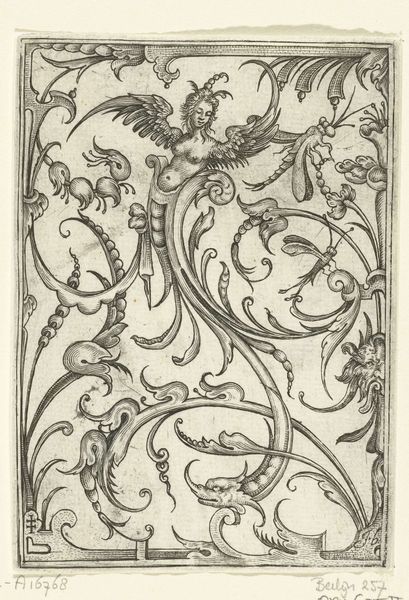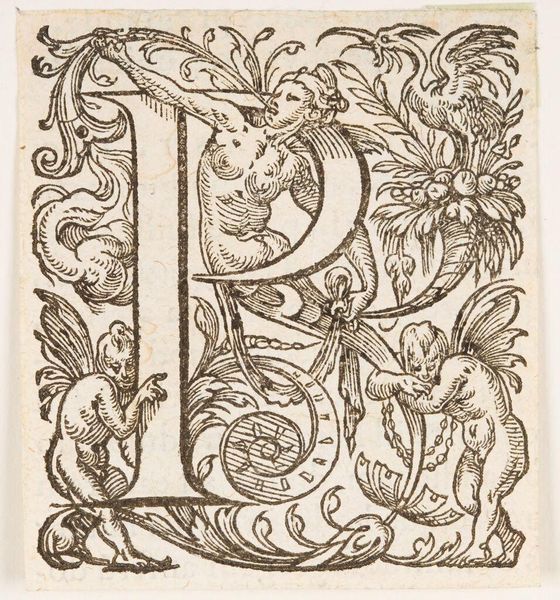
ornament, print, engraving
#
ornament
#
baroque
#
pen drawing
# print
#
pen illustration
#
pen sketch
#
old engraving style
#
ink line art
#
geometric
#
pen-ink sketch
#
line
#
pen work
#
decorative-art
#
coloring book page
#
engraving
#
doodle art
#
intricate and detailed
Dimensions: height 134 mm, width 82 mm
Copyright: Rijks Museum: Open Domain
Curator: Right now, we’re looking at a print from around the 17th century entitled "Negen ornamenten", or "Nine Ornaments," by Daniel de Lafeuille, residing here at the Rijksmuseum. It's a fantastic example of detailed Baroque design. Editor: My first thought? Exquisite detail. It feels like peering into a jeweler’s sketchbook. The flourish of leaves and the chandelier-like piece... there’s an opulence, but contained. Curator: The work’s classification as 'ornament' is particularly telling. During this period, prints like these served a very practical purpose. They were essentially idea books for artisans – jewelers, metalworkers, furniture makers, even architects. Editor: Like a 17th-century mood board, then! I can almost picture some craftsman flipping through it, thinking, "Aha! That's just the thing for Lady Beatrice's new whatnot." Curator: Precisely. The Baroque style is unmistakable, defined by its extravagant detail, dynamic movement, and a real sense of drama. Editor: You can see that drama even in the tight linework of the engraving. Each swirl of the acanthus leaves seems poised to spring off the page. Curator: The medium, engraving, was ideal for mass production, and consequently, for wide dissemination of these design ideas across workshops. Lafeuille wasn't necessarily creating "high art," but contributing to a visual culture accessible beyond the elite. Editor: It makes me wonder about the role of the artist in something like this. Was Lafeuille seeing himself as an artist, or more as a supplier of useful design? Curator: A good question. The line was often blurred then, and continues to be. These kinds of ornamental prints often occupy a space between pure artistry and functional design, reflecting the intertwined nature of creativity and commerce. The social role of art takes different forms across time periods, as we can clearly see here. Editor: It’s so easy to get lost in those details. I imagine it felt just as intricate and fascinating then, giving craftsmen a huge pool of inspiring designs to choose from. This glimpse into design history provides an interesting historical view on modern DIY aesthetic trends. Curator: Agreed. It gives us insight into a vital network for circulating style and taste across early modern Europe, and to see this period come alive!
Comments
No comments
Be the first to comment and join the conversation on the ultimate creative platform.
